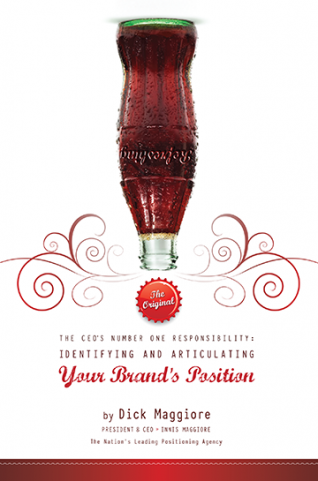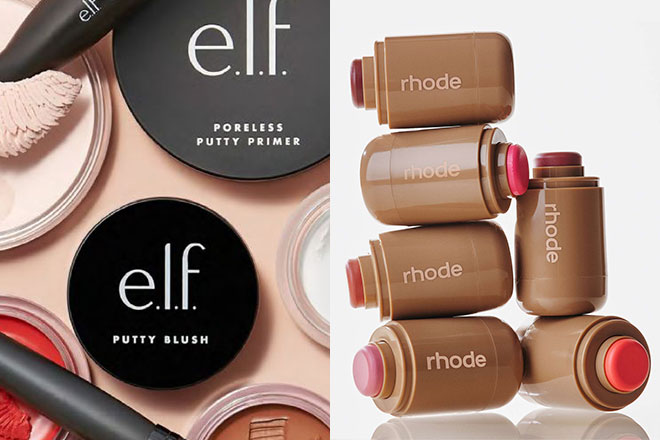From lipstick laying in a drawer to shower shelves stocked with luxurious shampoos, there’s no denying the beauty industry’s strong foothold in the global economy. Combine all the perfume bottles, mascara tubes, and facial serums in the world, and you have an industry valued at approximately $430 billion that’s expected to reach $580 billion by 2027. Merger and acquisition strategies are shaping and growing the brands that drive this intense consumer demand.
In the spring, e.l.f. Beauty, an affordable cosmetics brand with products for every eye, lip, and face, announced plans to acquire rhode, a simple, intentional skincare and beauty brand founded by Hailey Bieber, for $1 billion.
When it comes to these monumental merger and acquisition strategies, brands always run the risk of muddying their distinct identities. With our flair for positioning, we studied how this deal is preserving the unique identities of the e.l.f. and rhode brands.
The rhode to Success
According to Sandbox Studio Ventures, a venture capital firm specializing in celebrity startups, nearly 97% of celebrity brands fail within the first few years. So, when Hailey Bieber, daughter of actor Stephen Baldwin, wife of popstar Justin Bieber, and global runway supermodel, launched rhode in 2022, long-term success seemed unlikely … as did the possibility of a profitable merger and acquisition strategy.
But those predictions couldn’t have been further from reality.
Launching only three products, rhode grossed $10 million in sales in the first 11 days on the market. Today, the brand has netted $212 million in sales during the 2025 fiscal year with its 10-product lineup.
So, how did rhode overcome the odds? Easy. It stuck to a distinct brand position of creating products that combined makeup and skincare for “beauty made simple.”
Rather than maintain a full arsenal of beauty products — blushes, foundations, eye shadows, and more — consumers can take a simplified approach to their morning routines. Apply a quick splash of glazing milk and a couple dabs of a pocket blush, and you’re ready to head out the door sporting your natural, glowing face. This minimal position quickly turned heads in the beauty industry, which has traditionally championed “glam” red-carpet looks. Eventually, rhode’s effective differentiation even caught the eye of beauty businesses interested in potential merger and acquisition strategies.
Though its multi-use products are the primary way rhode expresses its position of makeup and skincare made simple, it also weaves it into other areas of the brand.
For example, the brand uses intentional formulas that focus on effective active ingredients rather than buzzword ingredients. Though a lot of brands stake their claims on science-backed formulas (what some call “science-washing”), rhode upheld up its promises with noticeable results, which ultimately made it a prized piece in e.l.f.’s merger and acquisition strategies.
Bieber even hired renowned cosmetics chemist Dr. Ron Robinson, who’s worked with brands like Clinique, Revlon, Lancome, and even the acclaimed luxury brand La Mer (most famous for its moisturizer valued at $390 for 2 oz.), to create the star-studded products that opened the door to merger and acquisition strategies.
Which brings us to the brand’s next smart positioning play — a small product line. Years after launching with only three products, rhode continues to keep things minimal. Today, the brand stocks only 10 products between its skincare and makeup categories.
Despite its small product line, rhode keeps consumers engaged with limited releases, like seasonal lip treatment scents. The sheer popularity of these drops was a motivating factor that placed rhode as a frontrunner for merger and acquisition strategies in the beauty market.
It’s no surprise then, that Bieber’s marketing and branding follows the same suit of simplicity, which starts with clean, minimalist grey packaging and style. More granular to its position, the brand adopts an indie feel despite its Hollywood heritage. Though the brand recently announced its fall Sephora launch, rhode has maintained a direct-to-consumer business model for most of its history.
rhode also kept its marketing straightforward, relying primarily on digital campaigns and influencers. Among the many faces promoting the brand was the founder herself showcasing everything from her daily routine to runway looks using the same simple product lineup. The content quickly exploded into a viral trend that sent many consumers on a mission to achieve “glazed donut” skin.
Yet, even with virality as part of its story, rhode’s momentum has never wavered. Instead, its ability to live out the brand position of simple, effective skincare has created a loyal fanbase and made it the object of such a profitable partnership, compared to other merger and acquisition strategies in beauty.
The Merger and Acquisition Strategies of the e.l.f. Beauty-Verse
e.l.f Beauty positions itself as the affordable, yet high-quality makeup brand. The brand has continually reinforced that identity in bold ways. During its launch in 2004, for example, e.l.f. triumphed over drugstore competitors like CoverGirl and Maybelline with its 13-product lineup — each priced at $1. Since then, the affordable makeup brand continues to infuse this position into its business strategy.
One of its most effective tactics has been embracing “dupe culture,” a phenomenon that involves mimicking higher-end products at a more economical price point. Some of its most popular dupes include the Power Grip Primer ($11), a substitute for Milk Makeup’s Hydro Grip Primer ($30) and the Halo Glow Liquid Filter Foundation ($15), an alternative to Charlotte Tilbury’s Hollywood Flawless Filter Foundation ($50). This has made the brand especially popular among Gen Z audiences, considered a fairly thrifty demographic.
Looking to expand its “beauty-verse,” e.l.f. made intentional strides to preserve its brand identity. Rather than overexert itself through copious line extensions, the affordable beauty giant sought merger and acquisition strategies to expand its industry foothold.
Prior to rhode, the company acquired Naturium, an ingredient-led, inexpensive skincare brand, through a $355 million deal in 2023. The move gave e.l.f. a larger presence in skincare by inviting a new brand into its portfolio. Other merger and acquisition strategies offered similar benefits. For instance, a 2020 acquisition of W3ll People offered e.l.f. substantial reach in the clean beauty market. Together, e.l.f. and its child companies operate as a house of brands, each with its particular discipline and market niche.
e.l.f. Beauty x rhode — Two Brands, One Future
Like the other acquisitions, rhode offers e.l.f. an opportunity to expand — this time into the prestigious beauty market — all without abandoning its own affordable position. e.l.f. also offers rhode an opportunity to continue its trajectory for growth using the resources and connections of its beauty-verse.
But just because merger and acquisition strategies look good on paper doesn’t mean they’re poised for long-term success. From Kmart and Sears to Microsoft and Nokia, there are numerous attempted deals that quickly dissolved into huge financial missteps.
Unlike these failed strategies, the rhode acquisition is not an act of absorbing an identity into the e.l.f. brand. Instead, it’s an act of preservation that allows these brands to mutually benefit from one another. By accentuating, rather than overcrowding, rhode and e.l.f. maintain their distinct purposes in the beauty market. It’s a clear demonstration of business strategies that understand brand positioning (whether stated directly or not).
In this way, e.l.f. remains the brand consumers trust for affordable, high-quality makeup, and rhode remains a simple, effective, and higher-end skincare brand. These brands are choosing to grow these positions in the minds of their respective consumers, e.l.f. by growing its portfolio and rhode through larger corporate resources.
By honoring the power of their individual positions, these brands are poised for a bright, successful future.
Wondering if merger and acquisition strategies could help boost your brand? Positioning strategy can help inform your next steps without weakening your brand identity. Contact us to start a conversation about growing your business.



